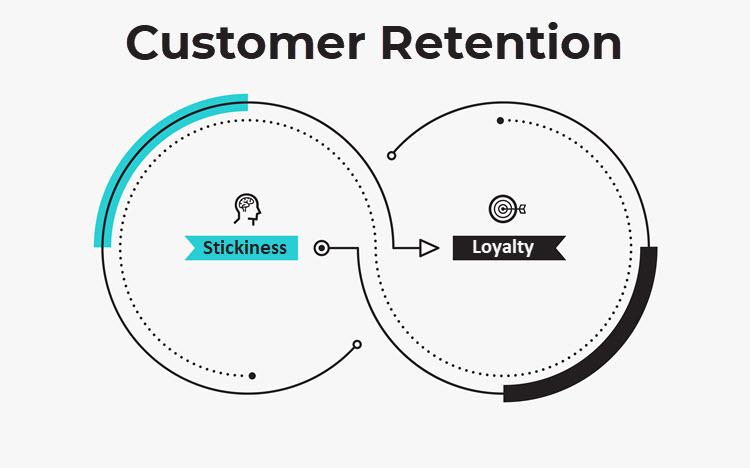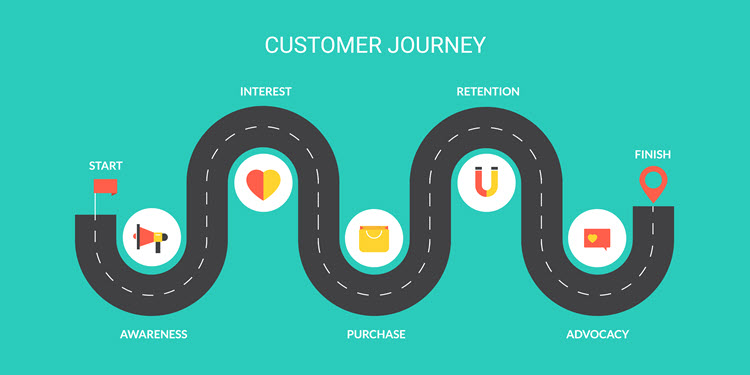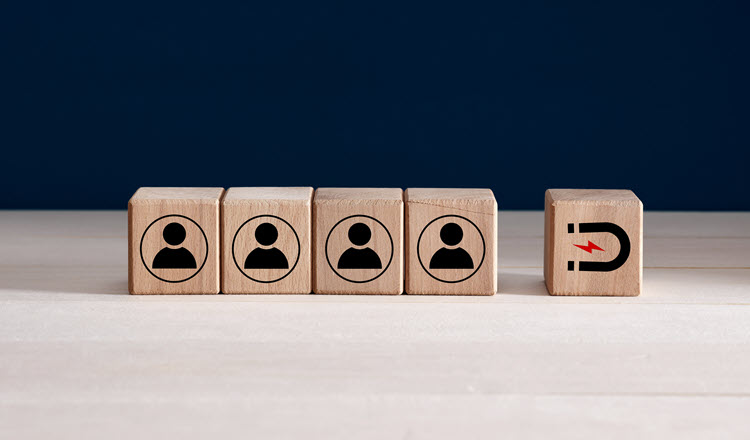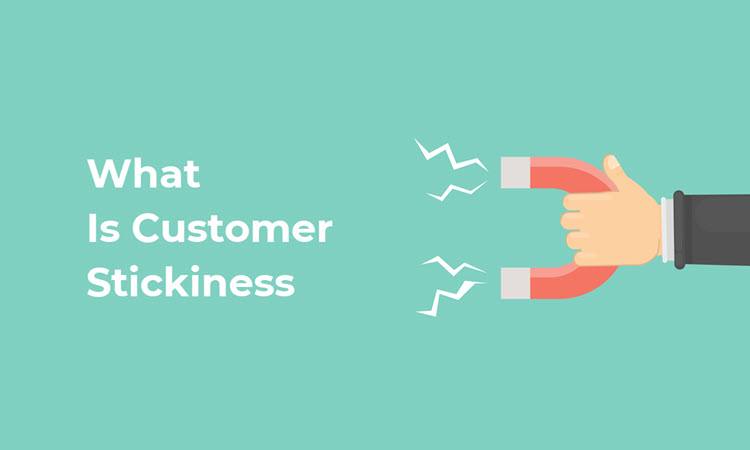If you ever created a marketing strategy, chances are it focused on landing new customers. However, retaining customers is a frequently neglected and often more lucrative option.
But how do you foster loyalty when the rise of ecommerce has conditioned shoppers to low-engagement, high-choice behavior patterns? Customer stickiness is an effective in-between strategy.
This article explains customer stickiness and how it keeps customers buying from you time and again.
What Is Customer Stickiness?
Customer stickiness is a marketing concept that explains why customers “stick” with a product or service. What differentiates it from similar customer retention concepts is that it rests on creating a unique value proposition which customers return to because there is no adequate substitute.
A good example of customer stickiness are social media platforms. Facebook, Instagram, TikTok, and other social media platforms thrived because they took advantage of our innate curiosity and desire to share our experiences. The resulting product is unique and highly engaging, with virtually no competition outside of other social media platforms. Even if we tell ourselves there are better ways to spend our time, we still feel the urge to “check in” and scratch that itch. Social media platforms are so sticky because they are perfectly honed to target our deepest desires and needs.
Customer Stickiness vs. Retention
Even though they are often used interchangeably, customer stickiness and customer retention are different.
Customer retention is a broader concept, and it is used to measure a company’s ability to generate recurring business and turn prospects into repeat customers. Stickiness, on the other hand, is narrower in its scope and applies only to a specific service or product.
Many businesses dedicate entire departments to customer retention. The tasks of these teams range from designing sticky products to implementing a comprehensive customer retention strategy throughout a product line.

Customer Stickiness vs. Loyalty
Customer loyalty and stickiness are similar in that they feed into customer retention, but they do so differently. Customer stickiness is the first step, while loyalty is the end goal. With sticky products, customers stay with a brand because they consistently address their pain points and deliver value, while customer loyalty relies on a deeper, more emotional connection.
Even though they are becoming increasingly rare, loyal customers are precious to a brand because:
- Loyal customers provide word-of-mouth marketing.
- They are more receptive to the business’s other products and services.
- Loyal customers are much more likely to give feedback and reviews.
- They are less receptive to marketing from rivals and, therefore, less likely to switch to the competition.
Customer stickiness is an excellent foundation for a retention strategy, but a business should prioritize turning one-time shoppers into loyal customers for the best results.
Note: Building brand equity and customer loyalty requires thoughtful planning. To better understand customer retention, read our article on 6 Customer Retention Strategies You Should Know About.
Why Is Customer Stickiness Important?
Retaining a customer base is much more cost-effective than constantly fighting to attract a new one. Many businesses mistakenly focus their marketing budgets exclusively on customer acquisition, even though investing in customer stickiness gives a better return on investment.
It is a common saying in marketing circles that customer acquisition is 5 to 25 times more expensive than customer retention. According to Frederick Reichheld, increasing customer retention rates by 5% increases profits by 25% to 95%.
Another significant advantage of focusing on customer retention is that it enables the use of a recurring revenue model. A solid retention strategy alongside a recurring revenue model means cash flow is less volatile and it is easier to keep track of your finances and make long-term investments.
Note: If your business is based on a recurring revenue model, check out the best practices for implementing recurring payments.

How To Increase Customer Stickiness?
The tactics to increase customer stickiness depend primarily on your industry and product, but some general rules apply across the board. Here are five tips to help make your product stickier.
1. Provide a Great Customer Experience
First impressions are everything, and there is no substitute for going above and beyond customer expectations. To keep customers coming back, the customer-facing part of your business should impress customers from the get-go.
Note: In ecommerce, omnichannel is the name of the game. Learn how this approach impacts your efforts from our article Omnichannel Customer Experience – Everything You Need to Know.
2. Be Unique
Customers flock to a product that solves a problem nothing else does. Even though it is a tricky balancing act, carving out a niche in a crowded market is a surefire way to get repeat customers.
3. Seek Feedback
To improve your product, you need to know what your customers think about it. Be proactive in communicating with your clients and provide an easy way for them to give genuine feedback.
Note: Read up on this method of improving customer satisfaction in our article What is Customer Feedback and Why Is It Important?
4. Follow Up
Stay on your customer’s radar by using retargeting ads or other e-commerce personalization tools. By knowing the average time to your customer’s next purchase, you can ramp up your marketing effort as the customer approaches the point when they are ready to buy again.
5. Create a Loyalty Program
A loyalty program directly incentivizes repeated purchases and builds trust and engagement.
Note: Find a loyalty program that fits your business by reading our article Best Loyalty Programs to Use for an Online Shop.

How to Measure Customer Stickiness?
Keeping track of your customer retention metrics is critical to success. Use these three formulas to measure your progress.
Repeat Purchase Ratio
This figure measures the ratio of customers who made a repeat purchase of your product. The higher the percentage, the better. Here is how to calculate it.
Divide the number of repeat customers by the total customers and then multiply by 100. This will give you the repeat purchase ratio for the selected time frame.
Example: 600 repeat customers out of 2000 total customers gives a 30% repeat purchase ratio.
Note: Find ideas how to improve your repeat purchase ratio in our article on how to increase your repeat purchase.
Customer Churn Rate
Customer churn rate is the percentage of customers who did not make a repeat purchase. The goal is to keep this number as low as possible.
To measure the churn rate, divide the number of non-repeat customers by the number of total customers and multiply by 100.
Example: 900 non-repeat customers out of 2000 equals a 45% churn rate.
Customer Lifetime Value
Customer lifetime value (CLV) is a metric that measures the total revenue a company can expect from a single customer throughout the business relationship. A high CLV indicates good customer stickiness and loyalty.
Calculating CLV is more complex, requiring you to estimate the average sale value, the average number of transactions, and the duration of the business relationship. To measure it, multiply the average order value by the average number of transactions and the time frame. If you prefer not to do the math yourself, you can use this handy online CLV calculator.
Example: With an average order value of $150 and five transactions average over two years, the customer lifetime value is $1,500.
Conclusion
To optimize your marketing efforts, consider the first purchase from a client as only half the battle. In the long run, investing in repeat customers is often more effective than chasing new clients.
By creating a unique value proposition for existing clients, any business can design a sticky product that will stand out from the competition and translate into long-term customer loyalty.
